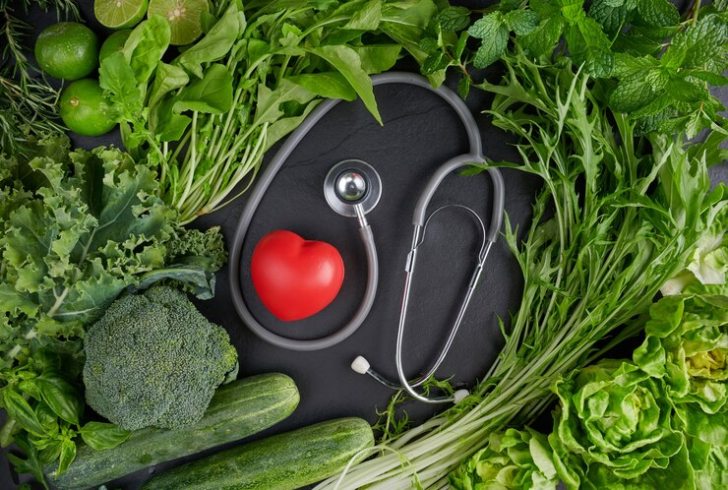A plant-based diet focuses on consuming foods primarily derived from plants. These include fruits, vegetables, whole grains, legumes, nuts, seeds, and oils. However, while it encourages prioritizing plant-based foods, it does not mean completely eliminating meat, dairy, or other animal products. Instead, this diet is about choosing plant-forward options more frequently to promote better overall health.
Health Benefits of a Plant-Based Diet
The benefits of following a plant-based diet have been widely studied. Numerous large-scale studies and clinical trials confirm its role in improving health and reducing the risk of chronic diseases. Here’s how it supports well-being:
1. Heart Health: Diets rich in plants have been shown to lower blood pressure and cholesterol, reducing the risk of coronary heart disease.
2. Diabetes Management: Plant-based eating helps regulate blood sugar and improve insulin sensitivity.
3. Cancer Prevention: A plant-heavy diet has been linked to a reduced risk of certain cancers, including colon, breast, and prostate cancer.
4. Weight Management: With fewer calories per serving, plants help control weight while providing essential nutrients.
5. Longevity and Energy: People who follow plant-based diets tend to live longer and feel more energized.

Image by jcomp on freepik | Plant-based diet supports heart health and more.
Plant-Based Diets and Nutritional Needs
Contrary to misconceptions, a plant-based diet offers all the necessary nutrients for optimal health, including proteins, fats, carbohydrates, vitamins, and minerals. This diet is naturally higher in fiber, antioxidants, and phytonutrients.
However, vegans or individuals fully excluding animal products may need to consider a vitamin B12 supplement to meet their daily requirements.
Types of Plant-Based Eating
Not all plant-based diets are the same. There are several variations, making it easy for individuals to choose the approach that best suits their lifestyle:
1. Flexitarian: Primarily plant-based but occasionally includes meat, poultry, or fish.
2. Pescatarian: Includes fish, seafood, dairy, and eggs but excludes meat and poultry.
3. Vegetarian: Includes dairy and eggs but excludes meat, poultry, fish, and seafood.
4. Vegan: Excludes all animal products entirely, including dairy and eggs.
How to Start a Plant-Based Diet
Adopting a plant-based diet doesn’t require an overnight transformation. Here are some practical tips to make the shift easy and enjoyable:
1. Load Up on Vegetables: Fill half of your plate with a variety of colorful vegetables at every meal. Snack on raw veggies with dips like hummus or salsa.
2. Rethink Meat as a Side: Use meat as a garnish instead of the main dish. For example, sprinkle small amounts in stir-fry or pasta.
3. Focus on Healthy Fats: Incorporate olive oil, avocados, nuts, seeds, and nut butters. These provide healthy fats to keep energy levels high.
4. Try Meatless Meals Weekly: Dedicate at least one night a week to vegetarian meals featuring beans, grains, and vegetables.
5. Include Whole Grains for Breakfast: Opt for oatmeal, quinoa, or barley and pair them with fruit, nuts, or seeds.
6. Explore Leafy Greens: Add greens like kale, spinach, or Swiss chard to meals daily. Try steaming or stir-frying to lock in nutrients and flavor.
7. Build Your Meals Around Salads: Start with greens, then layer beans, vegetables, herbs, or even tofu for added flavor and protein.
8. Satisfy Sweet Cravings with Fruit: Fresh fruits like apples, peaches, or watermelon make great desserts.
Plant-Based Eating Throughout the Day

Image by macniak on freepik | Enjoy healthy plant-based meals throughout the day.
To make the plant-based diet more approachable, here’s a sample breakdown of plant-forward meals:
Breakfast Ideas
1. Rolled oats topped with walnuts, sliced bananas, and a dash of cinnamon.
2. Whole-wheat English muffin topped with avocado, fresh tomato slices, and a side of blueberries.
3. Breakfast burrito with scrambled eggs, black beans, peppers, and Monterey Jack cheese.
Lunch Ideas
- Greek salad with tomatoes, Kalamata olives, feta cheese, parsley, and whole-wheat pita bread.
- Tomato basil soup served with whole-grain crackers and an apple.
- Vegetarian pizza topped with mushrooms, onions, broccoli, and bell peppers.
Dinner Ideas
1. Grilled tofu with vegetable skewers, served alongside quinoa and a spinach salad.
2. Whole-wheat pasta tossed with cannellini beans, peas, and cherry tomatoes.
3. Vegetarian chili with a light spinach and orzo salad on the side.
Why Plant-Based Eating Is Worth Trying
Switching to a plant-based diet does more than improve physical health—it also contributes to a sustainable lifestyle. Specifically, eating more plant-based meals reduces the environmental impact caused by animal farming, including greenhouse gas emissions and water usage.
Moreover, the versatility of this approach makes it accessible to everyone. Whether someone chooses to reduce meat gradually or go fully plant-based, there’s room for flexibility while still reaping the benefits.
By prioritizing nutrient-dense, whole foods from plant sources, this eating style effectively supports both individual health and the well-being of the planet.







